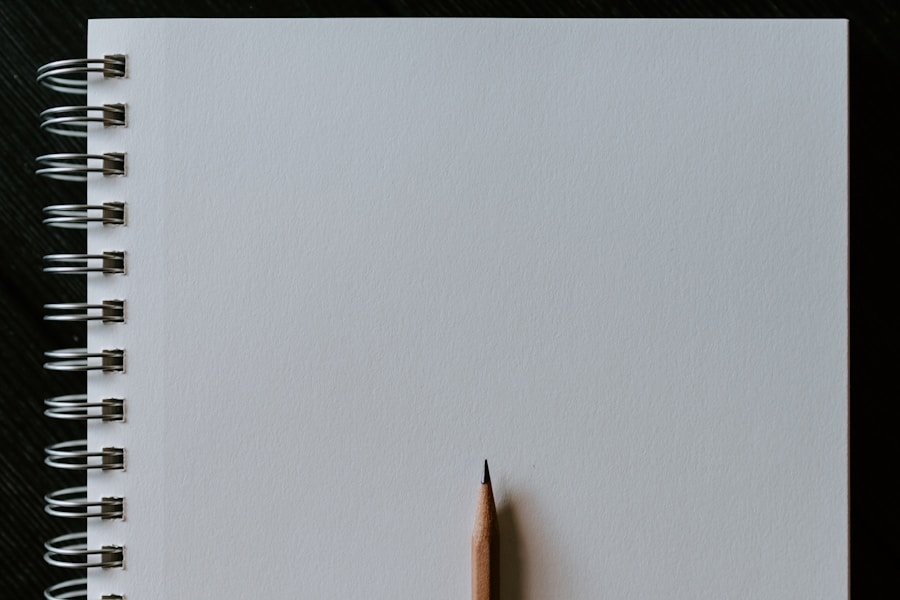The humble pencil has a long and fascinating history that dates back to ancient times. The earliest known version of the pencil can be traced back to ancient Rome, where scribes used a thin metal rod called a stylus to make marks on papyrus. However, it wasn’t until the 16th century that the modern pencil as we know it today began to take shape. In 1565, a large deposit of graphite was discovered in Borrowdale, England, and locals began using the substance to mark sheep. This discovery led to the development of the first wooden pencils, with graphite encased in a wooden sheath to make it easier to handle. The word “pencil” itself comes from the Latin word “pencillus,” which means “little tail,” a reference to the fine point of the graphite.
The pencil continued to evolve over the centuries, with improvements in both the materials used and the manufacturing process. In the 19th century, the invention of the eraser revolutionized the pencil, making it possible to correct mistakes and leading to its widespread use in schools and offices. Today, the pencil remains a popular and versatile tool for writing, drawing, and sketching, with a rich history that spans centuries and continents.
The Evolution of Pencil Technology
The technology behind the pencil has come a long way since its humble beginnings. Early pencils were made by encasing a stick of graphite in a wooden sheath, but as demand for pencils grew, manufacturers began experimenting with different materials and techniques to improve their quality and durability. One major breakthrough came in the 19th century with the development of the modern pencil lead, which is actually made from a mixture of graphite and clay. This innovation allowed for greater control over the hardness and darkness of the pencil marks, leading to a wider range of options for artists and writers.
In recent years, there have been further advancements in pencil technology, including the development of mechanical pencils that use a refillable lead instead of traditional wood-cased pencils. These mechanical pencils offer greater precision and convenience, making them popular choices for professionals and students alike. Additionally, there has been a growing interest in eco-friendly pencils made from sustainable materials such as recycled paper or biodegradable plastics, reflecting a growing awareness of environmental issues in the manufacturing industry. Overall, the evolution of pencil technology has been marked by a constant drive for improvement and innovation, resulting in a wide variety of options for consumers.
Pencil Manufacturing: From Raw Materials to Finished Product
The process of manufacturing pencils is a complex and intricate one that involves several stages, from sourcing raw materials to packaging the finished product. The main components of a pencil are graphite, clay, and wood, all of which must be carefully selected and processed to meet quality standards. The first step in pencil manufacturing is to prepare the graphite and clay mixture, which is then extruded into long rods and cut into individual pencil leads. The wooden casings are typically made from cedar wood, which is known for its smooth texture and durability. The wood is cut into slats, which are then grooved to hold the pencil lead and coated with a layer of paint or lacquer for protection.
Once the individual components are prepared, they are assembled into pencils using specialized machinery that can produce thousands of pencils per hour. After assembly, the pencils are inspected for quality and sharpened before being packaged for distribution. The manufacturing process requires precision and attention to detail at every stage to ensure that the final product meets the high standards expected by consumers. Additionally, there is a growing emphasis on sustainability in pencil manufacturing, with many companies implementing eco-friendly practices such as using recycled materials and reducing waste in their production processes.
The Role of the Pencil in Education and Creativity
The pencil has long been an essential tool for education and creativity, playing a crucial role in the development of literacy and artistic expression. In schools around the world, pencils are used by students of all ages to write, draw, and solve problems, making them an indispensable part of the learning process. The act of writing by hand has been shown to improve memory retention and cognitive skills, making pencils an important tool for academic success. Additionally, pencils are often used in art classes to teach students about shading, perspective, and other fundamental techniques, providing a hands-on approach to learning that fosters creativity and self-expression.
Beyond the classroom, pencils are also widely used by professionals in various fields, from architects and engineers to writers and illustrators. The versatility of the pencil makes it suitable for a wide range of tasks, from sketching out blueprints to drafting novels or creating intricate drawings. The tactile nature of using a pencil also allows for greater freedom and spontaneity in the creative process, making it a preferred tool for many artists and designers. Overall, the pencil’s role in education and creativity is undeniable, with its enduring popularity as a tool for learning and self-expression.
The Pencil as a Symbol of Resilience and Adaptability
The pencil has often been used as a symbol of resilience and adaptability due to its ability to endure despite changing technologies and trends. In an age where digital devices have become increasingly prevalent, the pencil has managed to maintain its relevance as a timeless tool for writing and drawing. Its simplicity and reliability have made it a favorite among those who value tradition and craftsmanship, while its adaptability has allowed it to evolve with new innovations such as mechanical pencils and eco-friendly materials. The pencil’s ability to withstand the test of time serves as a reminder of the enduring power of analog tools in an increasingly digital world.
Furthermore, the pencil has been associated with resilience in times of adversity, as seen in its use during wartime or in impoverished communities where access to technology is limited. In these situations, pencils have provided a means of communication and expression when other resources are scarce, highlighting their importance as a basic tool for human connection and creativity. The pencil’s ability to adapt to different circumstances and serve as a symbol of hope and resilience has cemented its status as an enduring icon in popular culture.
Famous Figures and Their Connection to the Pencil
Throughout history, many famous figures have had a strong connection to the pencil, using it as a tool for their creative endeavors or as a symbol of their personal philosophies. One such figure is Leonardo da Vinci, who was known for his meticulous drawings and sketches that showcased his keen observations of the natural world. Da Vinci’s use of the pencil as a medium for his artistic explorations has left an indelible mark on art history, inspiring countless artists to follow in his footsteps.
Another notable figure with a strong connection to the pencil is John Steinbeck, who famously wrote his novel “The Grapes of Wrath” using only pencils. Steinbeck’s preference for writing by hand with pencils reflected his belief in the tactile nature of writing as a means of connecting with his characters and stories on a deeper level. His dedication to using pencils as his primary writing tool underscores their enduring appeal as instruments for creativity and self-expression.
The Future of the Pencil: Innovations and Sustainability
As we look towards the future, there are several exciting developments on the horizon for the humble pencil. One area of innovation is in the development of new materials that offer improved performance and sustainability. For example, there has been growing interest in creating pencils from alternative materials such as recycled paper or biodegradable plastics, reducing reliance on traditional wood sources while minimizing environmental impact. Additionally, advancements in manufacturing processes have led to more efficient production methods that reduce waste and energy consumption, furthering efforts towards sustainability.
Another area of innovation is in the design of pencils themselves, with companies exploring new shapes, sizes, and features that cater to different user preferences. For example, ergonomic designs that offer improved comfort and grip are becoming increasingly popular among consumers who value usability and convenience. Furthermore, there is ongoing research into developing smart pencils that can digitally capture and store handwritten notes or drawings, bridging the gap between analog and digital technologies.
In conclusion, the pencil’s rich history, enduring relevance, and potential for innovation make it an iconic tool that continues to captivate people around the world. From its ancient origins to its modern-day adaptations, the pencil remains an essential instrument for education, creativity, and self-expression. As we look towards the future, it is clear that the pencil will continue to evolve and adapt to meet the changing needs of consumers while maintaining its timeless appeal as a symbol of resilience and adaptability.








